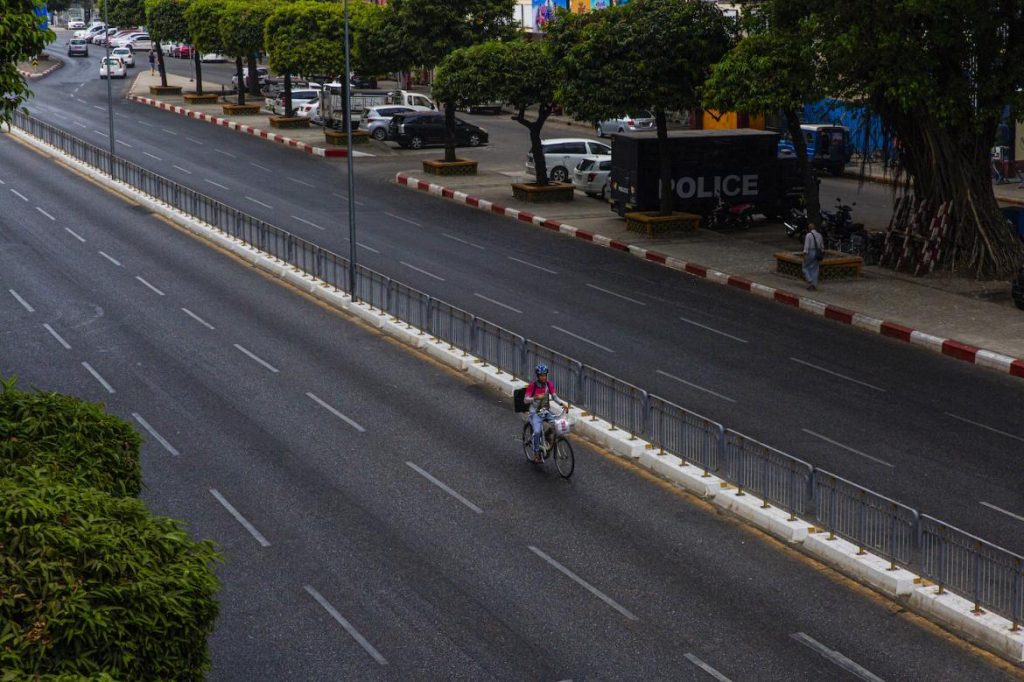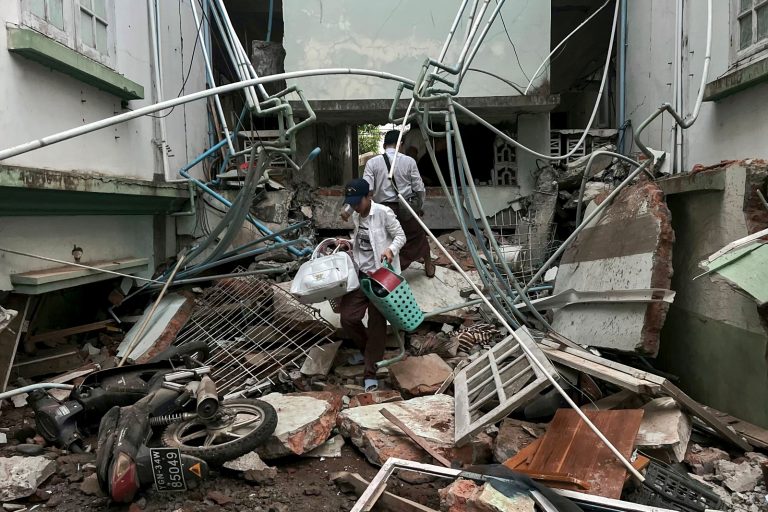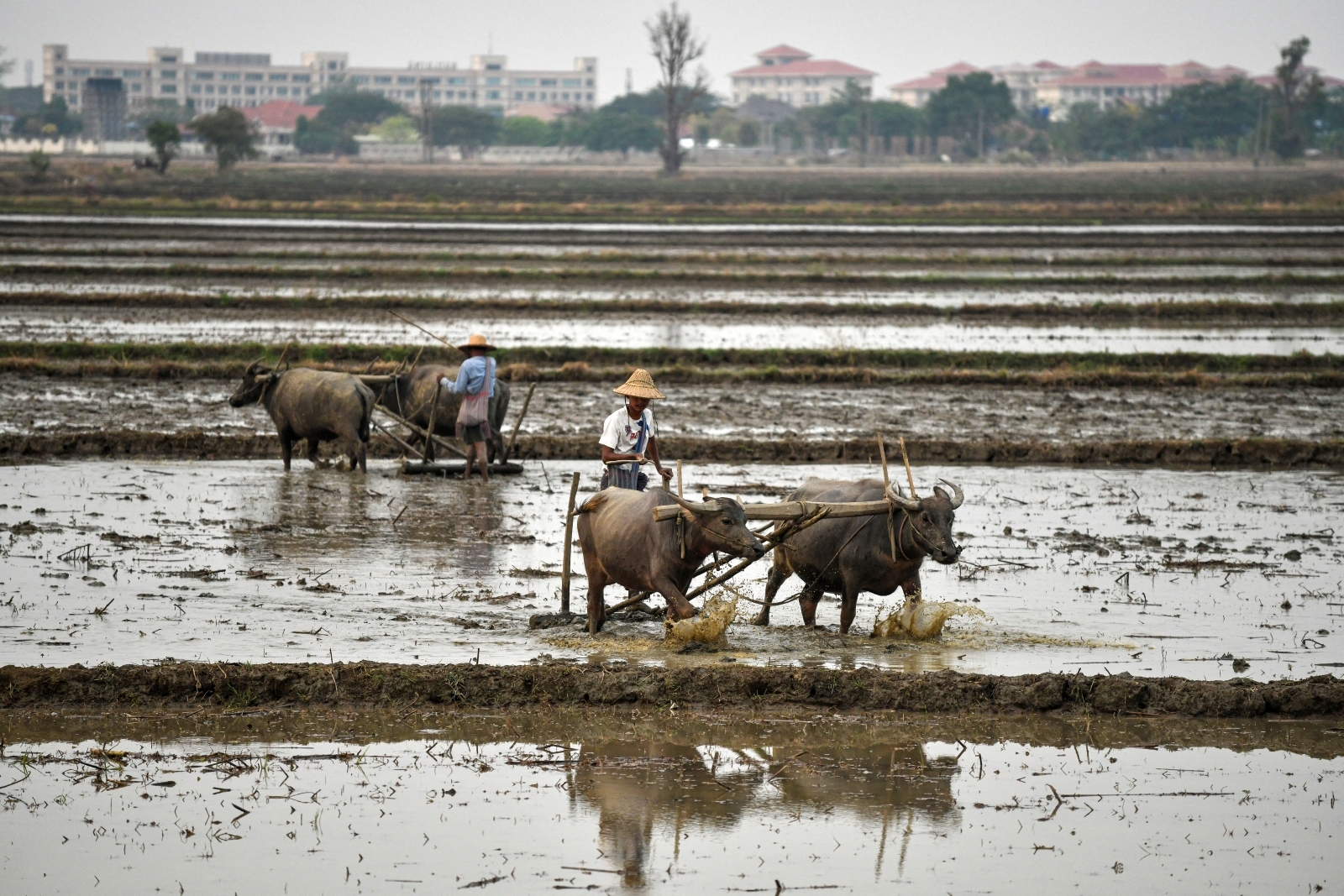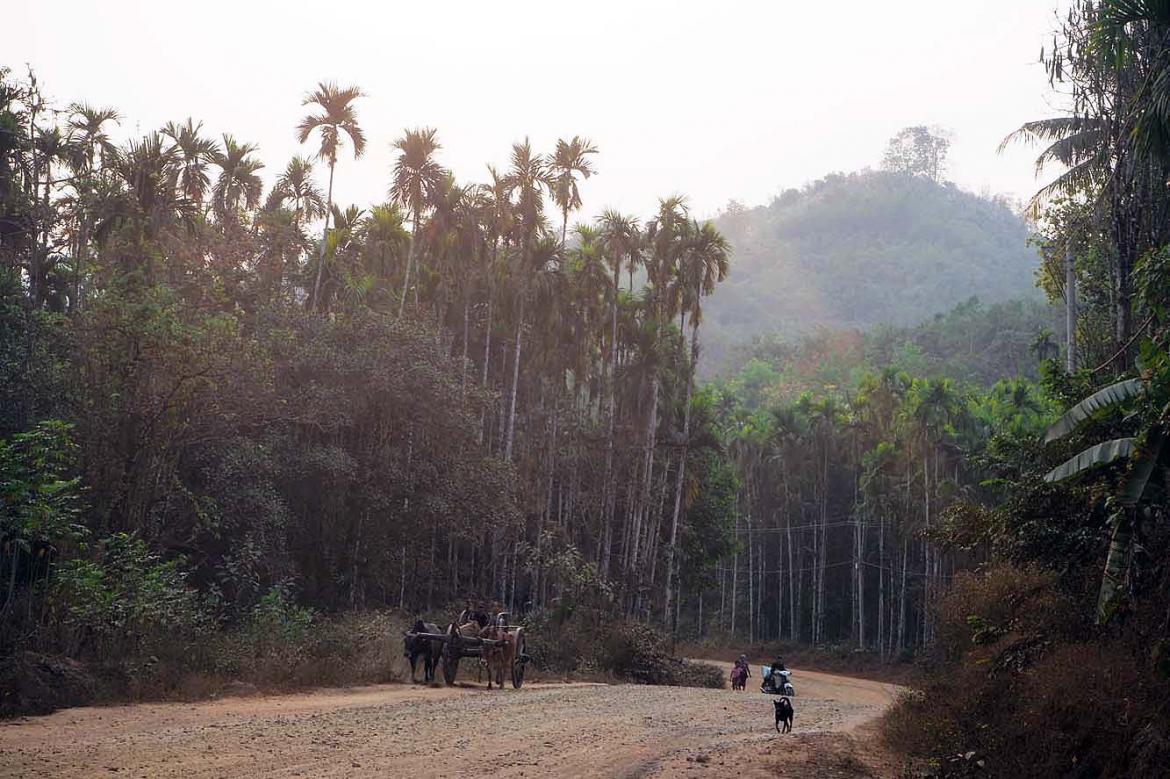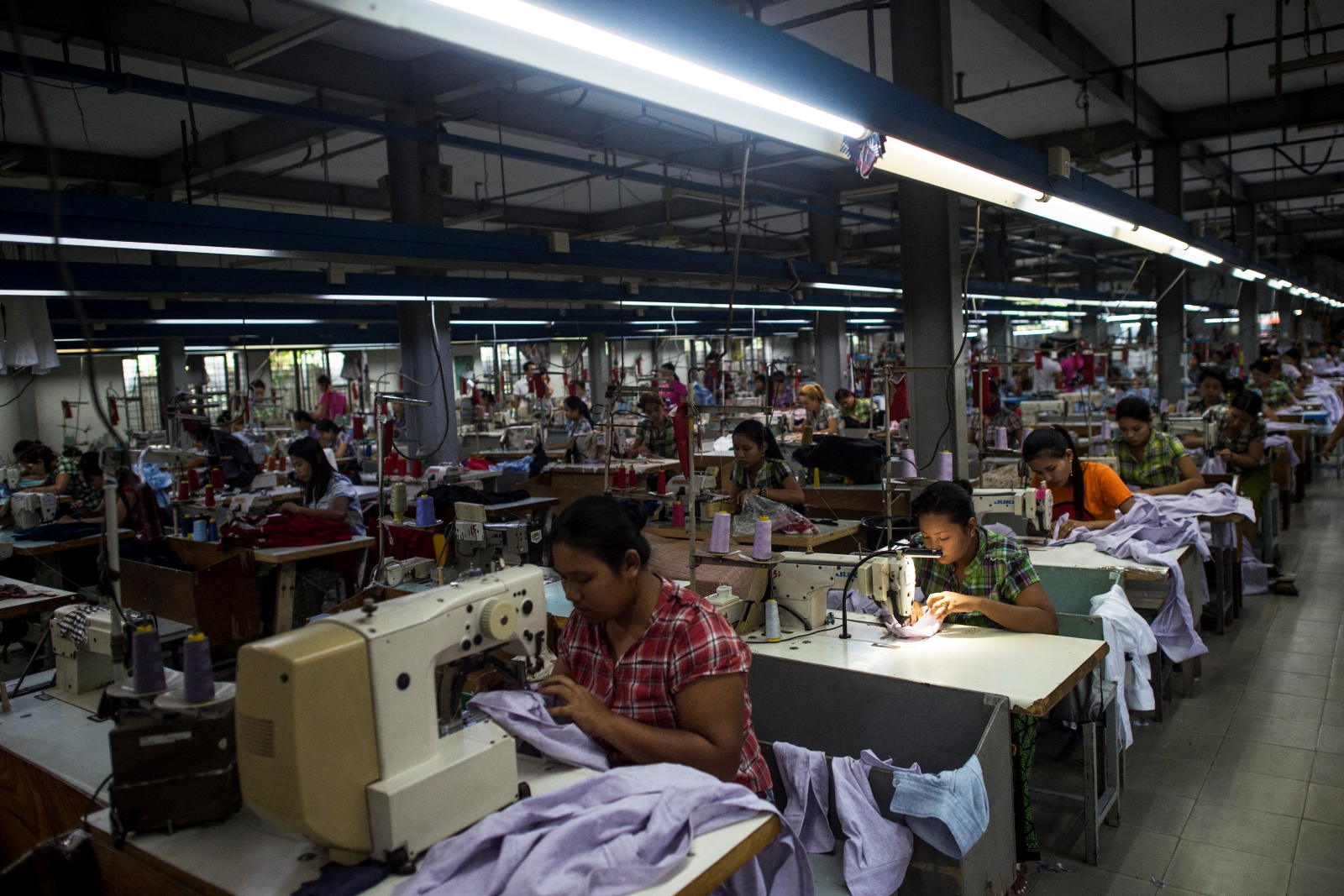Due for release in the coming days, the COVID-19 Comprehensive Response Plan will include new economic stimulus measures and increased funding for the health sector, as well as detail on how the plan can be funded.
By THOMAS KEAN and KYAW LIN HTOON | FRONTIER
The government is set to unveil a COVID-19 response plan that will expand economic stimulus and social protection measures while also boosting healthcare spending to better prepare the country for an expected rise in coronavirus cases.
The COVID-19 Comprehensive Response Plan is likely to be released in the coming days, Frontier understands, with the government only waiting for development partners to provide feedback on the final draft.
The plan is being kept under tight wraps, with multilateral institutions such as the World Bank – which was heavily involved in drafting the plan – and bilateral donors like the United States, the European Union and Australia, which were all consulted heavily, refusing to comment.
Ministry of Planning, Finance and Industry officials who led the drafting process did not respond to requests for interview, while ministry spokesperson and permanent secretary U Tun Tun Naing said he had no specific information on the plan.
Support independent journalism in Myanmar. Sign up to be a Frontier member.
Multiple sources familiar with the final draft of the COVID-19 Comprehensive Response Plan told Frontier it provides a coherent picture of the government’s economic plans and will make it easier for development partners to contribute through grants and loans.
The plan brings together measures that have already been announced – such as a K100 billion (US$70.1 million) fund established in March that will lend to affected businesses – as well as new initiatives to stimulate the economy and support vulnerable groups, who are already suffering as a result of the slowing economic activity and COVID-19 prevention measures. It also proposes a significant re-allocation of funds to the health sector to better prepare the country for responding to the pandemic.
The plan contains a strong focus on identifying potential sources of financing for the government’s economic stimulus initiatives. It doesn’t commit the government to undertaking all of the measures proposed, but rather seeks to prepare for their potential introduction when the situation requires.
As a result, it is only loosely costed. Frontier understands preliminary estimates are in the hundreds of millions of US dollars rather than the billions.
“There are so many things we just don’t know about what needs to be spent. We don’t know how long COVID-19 will last and how much of an impact it will actually have in Myanmar,” said one source involved in drafting the plan, who spoke on condition of anonymity because it has not yet been released.
“I think at the moment we can say the situation is probably worse than we think, but maybe not as bad as we fear. The plan is about being prepared in case this turns out to be as bad as we fear.”
Business leaders say they have been consulted to some extent on the plan, but don’t have a clear idea of the details.
“We’ve been contacted by the government, World Bank and so on – they asked us how they can help,” said U Ye Min Aung, vice president of the Union of Myanmar Federation of Chambers of Commerce and Industry. “We’ve given suggestions for what they can do. But we don’t know about the plan in detail, including how big it is.
“The economic impacts of COVID-19 have been very intense and [have] hit all layers of society so I hope the government can implement this plan quickly and effectively.”
Divisions over the response
The COVID-19 Comprehensive Response Plan is considered sensitive in part because there have been some disagreements among key economic policymakers over how to respond to COVID-19 and, in particular, how to pay for the response measures, several sources familiar with the situation said.
Since taking office in March 2016, the National League for Democracy government has established a level of fiscal prudence that is unprecedented in Myanmar, most notably moving the country away from financing budget deficits through lending to the government from the Central Bank of Myanmar, which contributed to chronic high inflation.
Among more conservative policymakers there is a desire to maintain that newfound prudence, even amid a global recession, and not borrow too much from foreign sources or finance a larger budget deficit through Central Bank lending. This has, however, put them at odds with those who argue that Myanmar needs a much more aggressive stimulus, similar to what many developed and developing countries around the world are already undertaking, the sources said.
“It is never an easy task to plan a stimulus package for a country with limited fiscal space. However, the COVID-19 Comprehensive Response Plan (CCRP) is just on the way,” Deputy Minister for Planning, Finance and Industry U Set Aung wrote in a rare tweet on April 14. (Set Aung did not respond to a request for comment.)
“It’s fine (during a difficult time) that increased government spending as a fiscal stimulus widens the fiscal deficit. We need to be careful because treasury bills/bonds auctions to finance the deficit may potentially offset the stimulus effect,” he followed up shortly afterward.
The source who was involved in drafting the plan downplayed suggestions of disagreement, however, and indicated policymakers were generally on the same page on how to respond.
“This is absolutely recognised as a ‘break the glass’ moment. At the same time no one [in Myanmar] is going to go crazy.
“No one is talking about undisciplined money printing, but a time-bound, specific allocation of funds from the Central Bank [to the government] is exactly what’s needed.
“The country won’t return to bad old ways though. It is just doing what everyone else [around the world] is doing right now.”
Frontier understands that advice from multilateral donors like the World Bank and International Monetary Fund to the government has changed significantly in recent weeks as the economic picture has worsened.
This changing advice in Myanmar reflects a shift in thinking at the top of these institutions, too. On April 15, IMF managing director Ms Kristalina Georgieva said that “exceptional times call for exceptional measures” and urged IMF members to spend whatever they needed to combat COVID-19 and to ignore the effect on public finances.
“Spend what you can,” she said, before adding, “but keep the receipts” – a reference to the need to be transparent and accountable about how stimulus money is being spent.
New initiatives and implementation challenges
The plan contains a wide range of new or expanded spending initiatives, sources familiar with the final draft provided to donors told Frontier.
There’s a strong focus on improving access to lending, particularly for small and medium-sized enterprises, through expansion of the current K100 billion fund. In an effort to encourage private banks to continue lending, it also proposes issuing government guarantees on some loans, the source who worked on the plan said. The plan also proposes expanding the current suite of tax deferrals and also offering tax credits for businesses that keep employees or expand their operations, the source added.
It also looks at the potential for expanding some social protection initiatives, such as cash transfers to affected groups, and measures to help create employment, such as community infrastructure initiatives.
There’s a significant boost of resources for the health sector, both through new spending and reallocation of the existing budget. The plan also focuses on measures that do not incur a financial cost but are important for the health response, such as easing restrictions on the import of medical equipment.
Similarly, the plan contains a section on encouraging innovative payment systems and e-commerce, with the government to lead by example, by shifting cash transfers to online platforms whenever feasible, the source who worked on the plan said.
Implementation though will be challenging in several respects. On cash transfers, for example, Myanmar has little administrative capacity for targeted payments, but universal transfers have been ruled out – at least for now – as too costly.
On health, just spending the extra money could be a challenge. In recent years the Ministry of Health and Sports has consistently struggled to spend all of its existing budget allocation, so there are questions around how it will manage the proposed influx of cash.
A key focus of the plan is working out how the proposed measures will be financed. Frontier understands there will be a budget reallocation as well as new spending funded primarily through foreign aid and concessional loans, and Central Bank lending to the government.
Officials are keen to avoid tapping private banks for financing through the sale of bonds, both because the market is too small and because they would prefer the banks to lend to businesses rather than buy bonds.
Multilateral and bilateral donors are likely to be a major source of financing. The World Bank has already approved a US$50 million loan, most of which will go towards boosting Intensive Care Unit capacity at hospitals around the country, and Western donors have also announced about $25 million in aid.
Much more support is expected in the coming months, both in terms of aid and low-interest loans, from multilateral and bilateral sources.
“There’s a substantial amount of funds available to Myanmar. It’s good money, it’s not conditional,” said the source involved in drafting the plan. “The international community has been a really positive partner, particularly the multilaterals.”
The COVID-19 Comprehensive Response Plan, the source said, “sets up the mechanisms and makes sure the finances are there. The important thing about it is it gives the government a lot of freedom to respond based on how the situation develops.”
Slowing growth
Already the signs are bleak, however. The COVID-19 pandemic has wreaked havoc on economic activity around the world, with the IMF saying the “Great Lockdown” would cause a 3.0 percent decline in global GDP this year – the worst recession since the Great Depression of the 1930s.
The economic impact of COVID-19 in Myanmar was initially limited to sectors such as garments, agriculture exports and tourism, but has since broadened due to spillover effects from other economies and the impact of domestic COVID-19 prevention efforts. Social distancing measures have been gradually strengthened since mid-March, and have hit businesses and workers in both the formal and informal sectors.
The World Bank has forecast that Myanmar’s economy will grow at between 2.0 and 3.0pc in 2019-20, down from earlier estimates of 6.3pc. Although this is higher than most developing economies in the East Asia and Pacific region, Myanmar’s high poverty level means slowing growth could have devastating impacts on its most vulnerable populations. The IMF, meanwhile, has forecast even lower levels of growth, cutting its earlier estimate of 6.4pc to just 1.8pc for 2020.
U Aye Tun, a joint secretary general at the UMFCCI, welcomed news of the government’s response plan, saying that existing stimulus measures were insufficient. The UMFCCI has been helping the government administer the K100 billion lending facility to local businesses, but Aye Tun said this amount was far from enough.
“We’ve already received more than 4,000 applications for loans,” he said. “It would be fantastic if they add to the existing stimulus package.
“These days, all businesses are facing difficulties paying their employees. They need funding to retain their employees and to keep their businesses operating until the economy improves.”


